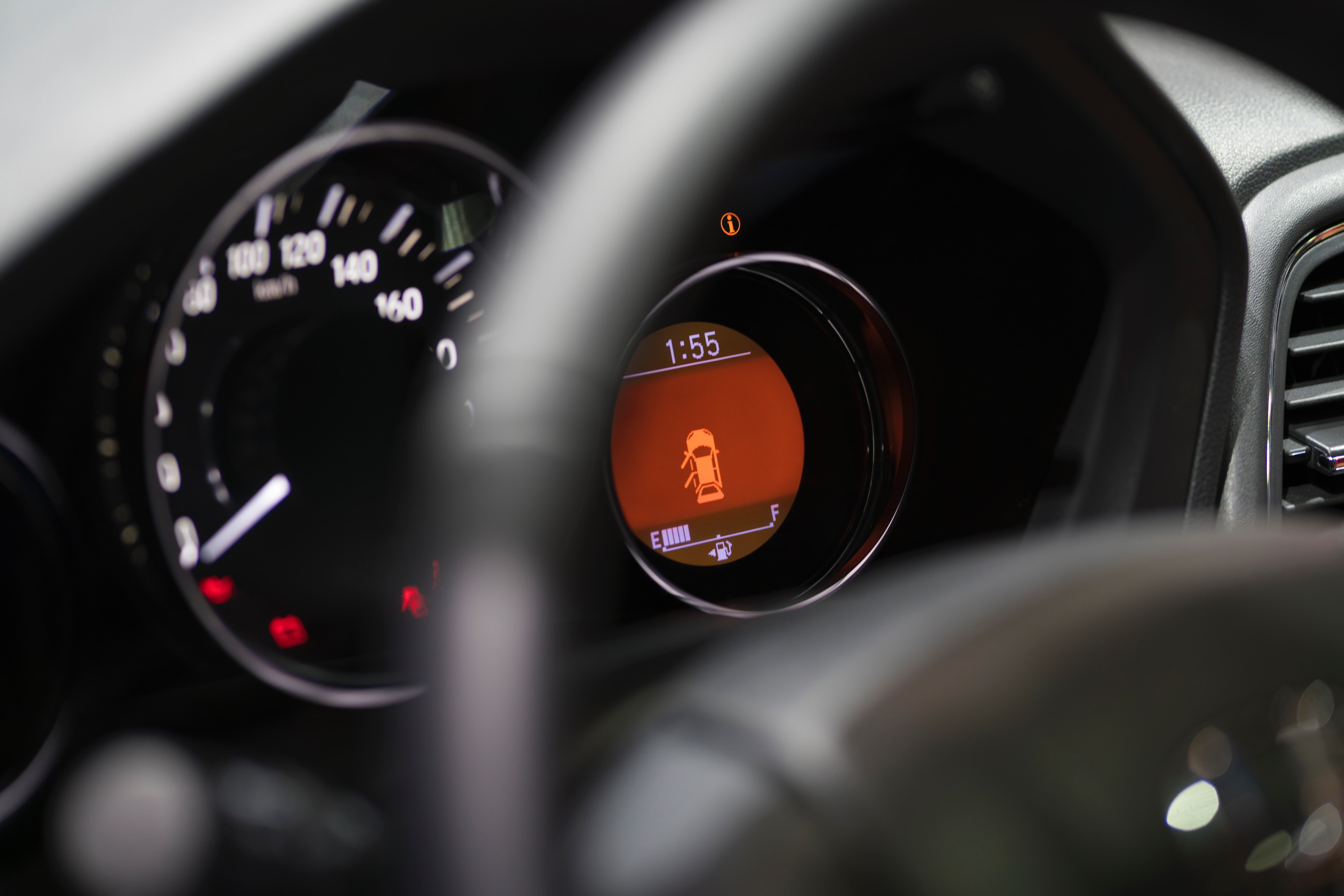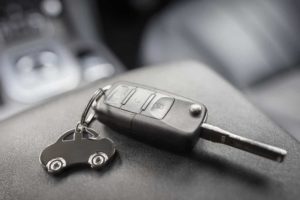You’ve probably heard a few tips and tricks to improve gas mileage before, but which ones are actually proven to work? Can you really improve gas mileage with personal habits and maintenance tips? Or is it a matter of choosing the cars with the best gas mileage at the dealership?
Spacer is here to set the record straight and explain exactly how gas mileage works, as well as how you can reasonably expect to improve gas mileage in your car.
Whether you’ve got a monster truck, a luxury vehicle, or a reliable family car, you’ll know how gas mileage works in your car and what you can do to make the most of your trips to the gas station.
Here are our top tips on how to improve gas mileage.
#1: Learn more about your car’s miles per gallon (MPG)
Before we get down into the nuts and bolts of car fuel economy, it’s important to first understand what gas mileage actually means and how MPGs are calculated.
MPG stands for miles-per-gallon, and it tells you how far your car should be able to go on a single gallon of gas. A car with an MPG of 40, for example, could presumably drive 40 miles on one gallon of gas.
Highway MPG is better than city MPG because in the city, where you stop and start a lot, you use more fuel, resulting in lower MPG. On the highway, where you drive at a steady speed, you use less fuel, leading to higher MPG.
You might also see combined MPG, which is a weighted average of highway and city MPGs. It’s a bit more vague for a car buyer, but can still be useful in estimating a car’s fuel efficiency.
It all sounds pretty straightforward, right? But here’s the big question: does the estimated MPG that you look at when buying a car match up with that car’s real-world fuel economy? Just a few years ago, the answer was no. Consumer Reports published an article a few years ago warning that the MPG labels on new cars didn’t tend to hold up in real-world settings. But while there have been reports of car companies cheating on their MPG tests, the discrepancy that Consumer Reports found was largely due to the outdated testing measures used by the Environmental Protection Agency (EPA).
Since then, the tests have been updated, car companies have been investigated for their questionable data collection practices, and we can all generally trust the MPG estimates when buying a new car.
And, there’s more good news. If your car has a real-time MPG display, you can get an even better sense of your fuel economy than the MPG estimates from the EPA. MPG readouts use your car’s fuel-flow rate, engine speed, manifold pressure and throttle position to calculate your car’s fuel economy, and are considered by experts to be accurate and reliable.
Don’t have a high-tech MPG reader? You can learn to calculate your MPG the traditional way, with a pencil and paper! Of course, the drawback to calculating MPGs yourself is that they will always be retroactive versus in real-time. But, learning how to find your true MPG is a great skill and can even be used to test the accuracy of your MPG reader.
Now, as we move forward with our MPG-boosting tips, make sure to keep track of your fuel economy. If you’re making the following changes, you should see improvements in your MPG. Otherwise, you might want to check with your mechanic to make sure there’s nothing wrong with your engine.
#2: Know whether to roll down the windows or crank up the AC
For years, there have been conflicting accounts on whether driving with the windows down or the air conditioning (AC) is better for fuel economy.
On one side, the pro-window people say that running the air conditioning wastes gas, thus, lowering your MPGs. On the other side, there are those who claim that driving with the windows open creates drag, which negatively impacts fuel economy.
Who is right in the end?
We wish that we had a clear winner for you, but the truth is, both sides are right.
Driving with the air conditioning does divert energy away from the engine, which uses more fuel. Additionally, driving with the windows down can indeed increase drag. Low-riding sports cars and cars with best gas mileage like electric cars are built to be more aerodynamic, thus making them especially vulnerable to changes in fuel efficiency due to drag.
So, if you’re trying to find out how to improve gas mileage without melting at the wheel, what should you do? Well, if you have a big bulky car that won’t be impacted too much by drag, stick to open windows if you can.
For cars with more aerodynamic designs, use AC when driving at higher speeds—like on the highway—and open windows when making short trips at low speeds.
#3: Lighten the load
Having a car is all about convenience, and a big part of that is being able to load up with groceries, passengers, moving boxes, and more. And while it’s fine to task your car with the occasional heavy load, just anticipate that it’s going to lower your gas mileage.
You can probably guess why. With more weight in your car, your engine has to work harder, using more fuel to function normally. So, what can you do about it?
Make sure that the items in your car are essential only. Maybe you can store those snow cables in the garage during the summer months. Or, perhaps you can finally drop off that box of donations you’ve been carrying around for far too long. Disassembling your car roof boxes or bike mounts when not in use is another good way to lower your fuel consumption.
#4: Adjust your driving habits
When thinking of how to improve your gas mileage through driving habits, consider these two categories: the way you drive and the way you plan out your trips.
In terms of how you drive, you can expect that the more relaxed you are, the better your gas mileage will be. Driving aggressively, with quick accelerations and sudden stops, requires your engine to work harder.
Of course, not every city invites the kind of Zen driving that will improve gas mileage. But, if you can get into the habit of laying off the pedals as much as you can, your engine will thank you.
The other way that you can change your driving habits to improve gas mileage is to be strategic with your outings. If you find yourself often driving home after work only to remember that you need to pick up the dry cleaning or buy a couple of things for dinner, you’re probably burning through more fuel than you realize.
Instead, try planning out your week so that you can schedule errands while you’re already out and about. Not only will this help your fuel economy, but it’s also a great time-saving hack!
#5: Keep an eye on your tire pressure
How often do you check your tire pressure and fill up your tires with air? Before big trips? Whenever you happen to see a tire filling station?
Keeping your tires filled is a simple car maintenance task that can help you boost your MPGs. Plus, it keep your tires in good shape! As we covered in our article What Should Be on Your Car Maintenance List?, you’ll want to check your air pressure about once every two weeks.
And, if you drive long distances or are living in a cold climate, you might need to fill up your tires more frequently.
#6: Replace and upgrade your tires
Just like having low pressure in your tires can lower your fuel economy, old tires can also have a negative impact on your MPGs. And, if you’re looking for ideas on how to improve gas mileage that will also give you a more comfortable ride, you might consider replacing your tires with an even better set.
In fact, there are now several options on the market for fuel-saving tires, and they’ve got more than an MPG boost to offer.
Fuel-efficient tires, which are also sometimes called low-resistance tires or low-rolling tires, are made using a variety of new engineering breakthroughs. Some rely on new tread patterns that have been tested for lower resistance. Others use new compounds in the tire that resist wear and tear.
You can find them for standard driving and all-weather conditions so that you can have great gas mileage no matter where you live. And, because they last longer, they’re also the more sustainable and eco-friendly tire option.
#7: If you have an older car, change out your air filters
Changing your air filters used to be a common tip for how to improve gas mileage. But that advice probably should have gone out the window with the carburetor, sometime in the early 90s. Why? Because the newer system, fuel injection, doesn’t need as much air to filter through the engine to work properly. Replacing the air filters before they’ve run their course won’t really do much to improve gas mileage.
But, old habits die hard, and you’ll still see plenty of car advice articles claiming that changing your air filter can improve your fuel economy. They’re not completely wrong, it’s just that changing out the air filter won’t be nearly as effective in boosting your MPGs than it would in the mid-80s.
So, just for standard maintenance, stick to the standard air filter replacement schedule of every 12,000 miles.
But wait! We have a twist for you! There is a type of air filter in your car that may just improve your fuel economy. We’re talking about the cabin air filter. This air filter is responsible for the airflow into your car cabin, and if you run the AC while it’s clogged, then your fuel economy will drop even lower. So make sure to replace that even more often than your engine air filter!
#8: Clean your fuel injectors
As we mentioned, modern cars rely on a fuel injection system to run efficiently. But when those fuel injectors are clogged, the consequences can range from poor fuel economy to an engine that simply won’t start.
Cleaning your fuel injectors can be done at home, but it’s an intensive—not to mention, messy—a job that is usually left up to a mechanic. And while most people will wait until there are noticeable engine problems to get the fuel injectors cleaned, you can schedule it proactively as a way to improve gas mileage.
#9: Upgrading your motor oil really can work
This is a controversial topic, and many car pros will tell you to stick with the motor oil recommended in your owner’s manual. Upgrading to fuel economy motor oil, they say, is nothing short of a snake oil remedy.
But according to the science whizzes at Chemical & Engineering News, the kind of motor oil you use does play a role in fuel economy. As they explain, it’s all about viscosity. Motor oils with lower viscosity allow fluids to, well, flow more easily through the engine, thus using less energy and improving fuel efficiency.
But, it’s a solution with some drawbacks. Thinner motor oils, without special modifications, can lead to more wear and tear in the engine parts that otherwise wouldn’t come into contact with thicker motor oils.
We would recommend talking to your trusted mechanic about the type of motor oil best suited for your engine.
#10: Cross these MPG myths off your list
Looking through these many MPG-boosting secrets, you might be surprised that your family’s handed-down fuel-saving habits didn’t make the list! We hate to break it to you, but it’s possible you’ve been following a few MPG myths, like these:
You should warm your car up before driving. Idling your car on a chilly morning doesn’t help your engine run more smoothly, and it certainly doesn’t help your MPG. If you live in a cold climate, it’s much better to invest in underground or covered parking as a way to protect your engine and battery from the cold. Take a look at some of the affordable parking spaces available for rent through Spacer in Boston, Chicago, Los Angeles, San Francisco or wherever you live.
Premium fuel gives you premium fuel economy. Nope, sadly, that higher price tag on premium fuel doesn’t translate to better fuel economy. Best to use the type of gas that’s recommended in your owner’s manual.
And, if you’re looking for the cheapest gas in your area, there are a variety of helpful apps with real-time info about gas prices across the country!
Used cars and larger cars have the worst fuel economy. We can file this under “maybe, but not necessarily.” Sure, vintage cars are probably not going to have the same fuel-saving technology as a newer model, so if you’re buying a used car from the last century, it’s likely to come with a low MPG. But, cars don’t tend to lose fuel efficiency over time, so as long as you’re looking at used cars built with better fuel economy, you can still hope to lower your monthly spending at the pump. And, if you buy a new car now, you can expect to enjoy the same or very similar MPG for the next several years.
Same goes for larger cars. Before modern technology was adapted for trucks and SUVs, there was some truth to their low MPGs. But nowadays, you can find larger cars with fuel economy to compete with the compact models. It may sound obvious, but if you’re interested in having good fuel economy, you’ll want to find the cars with the best gas mileage built into their design. Take a look at our article What’s the Best Electric Car on the Market to learn more about the best fuel efficient cars!
Now you know how to improve gas mileage, which tips will you take with you on the road?
Will you start calculating your MPGs yourself? Are you already scheduling a trip to the mechanic for a fuel injector cleaning? However you plan on boosting your MPGs, the team at Spacer would love to know!
Tell us all about your plans on how to improve gas mileage!




